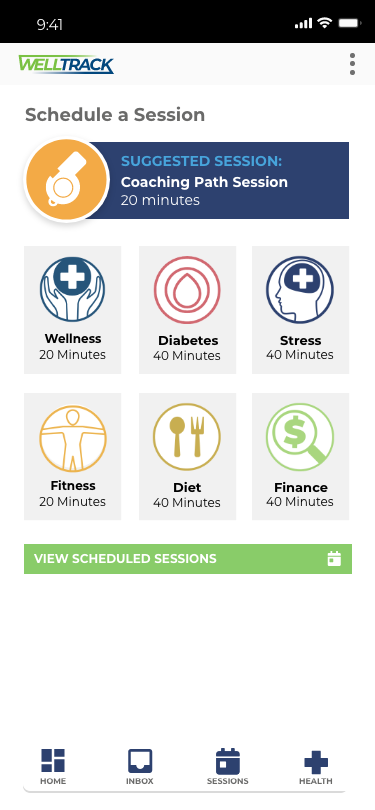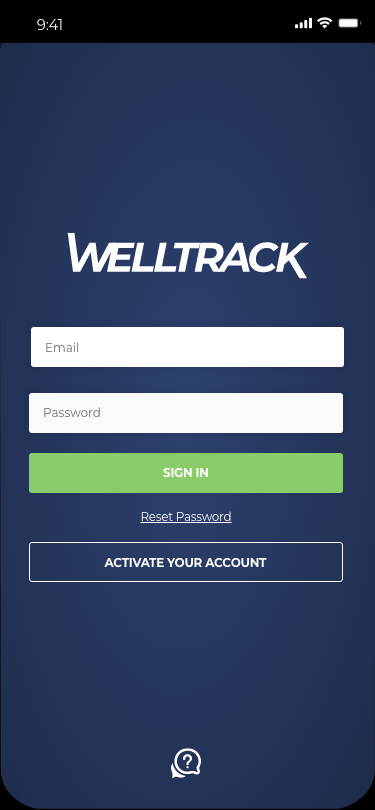STARTING POINT

Upon login, users of the WellTrack client portal were greeted with: "This application works best on desktop or tablet." Beyond creating an unflattering first impression, users weren't engaged. In a market where more than 60% of app users rely on mobile devices, WellTrack was forcing adopters to work around the app – not benefit from it.
An outdated user interface had been purchased through a third party marketplace, known for providing generic themed UI. This led to dynamic and diverse health data being presented in boring, text-centric pages. The unflattering presentation created obstacles for current clients, sales staff, and overall growth of the business. the robust functionality and aspirational goals of WellTrack were shackled by substandard UI and an old-fashioned focus on desktop-first thinking. Beyond a visual cleanup, and development of a brand new native app, WellTrack needed their new technologies to support:
- Appointment creation, cancellation, suggestions, and reminders
- Live video appointments using Twilio SDK
- Health data aggregation via API, manual entry, and proprietary algorithms
- Dynamic and realtime data visualization
- Chat capabilities with notifications
- Two-factor authenticated login process















 Launchpad Developers uses MicroSoft Bookings for scheduling. Click continue set up a meeting.
Launchpad Developers uses MicroSoft Bookings for scheduling. Click continue set up a meeting.